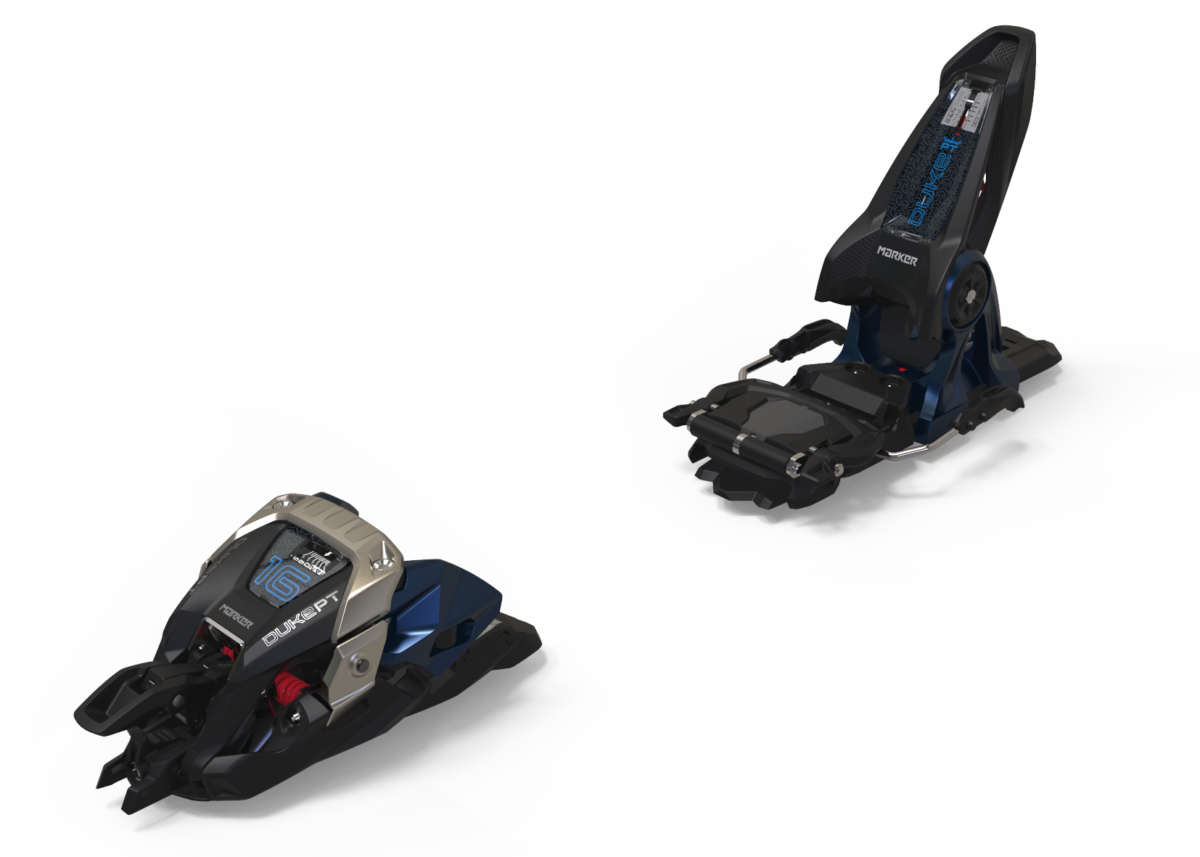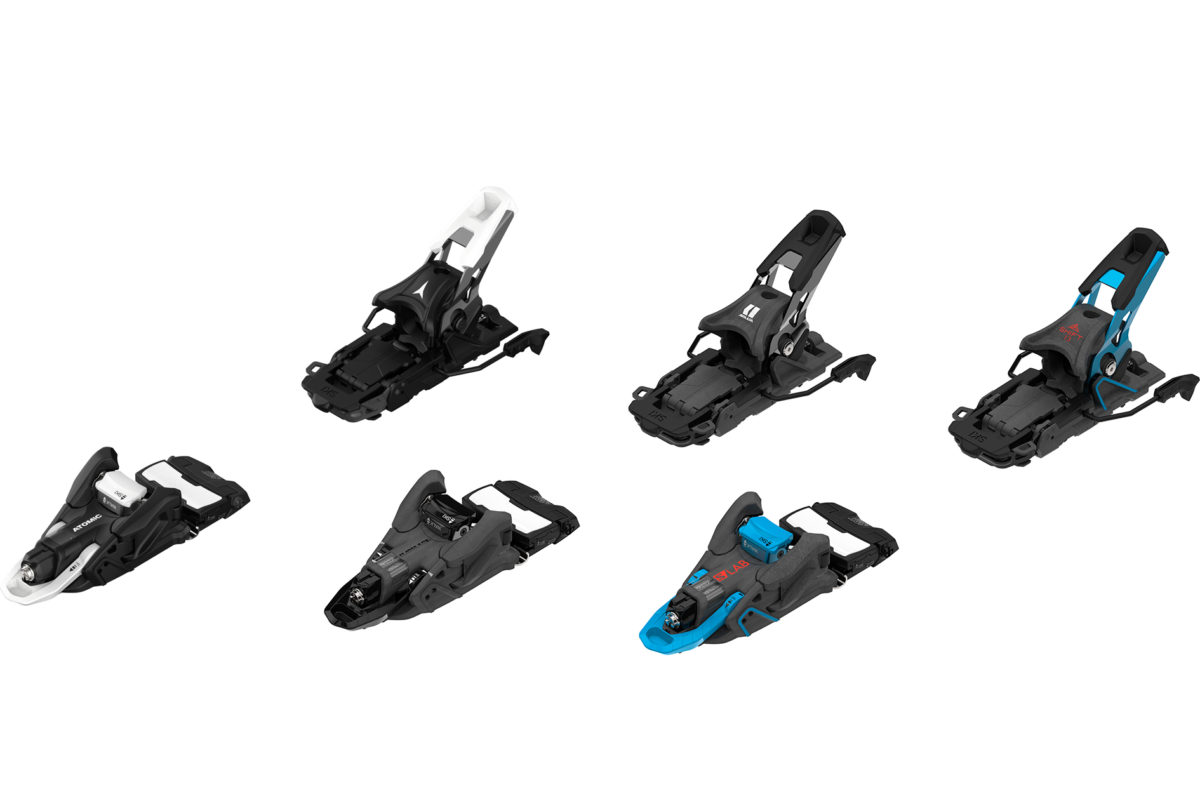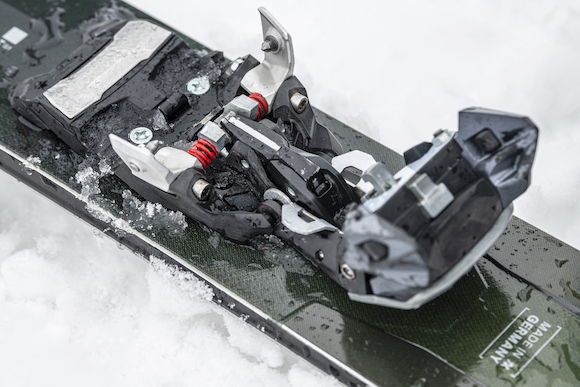It's been a long time since the weight reduction of the gear was called out.
Each manufacturer is competing to make everything from boards, boots, clothing to backpacks even 1g lighter. Bindings are no exception.
Tech-type bindings that are lightweight and have excellent walking performance are preferred by tour enthusiasts. Tech bindings are recommended for those who want to go to the mountains. and divided into two poles. However, three seasons ago Salomon, ATOMIC and ARMADA led by Amer Group introduced SHIFT bindings, and last season DUKE PT from MARKER.
In a nutshell, these two models are “walkable alpine bindings”.
It becomes a tech binding when walking and transforms into an alpine binding when gliding. Tech bindings specialize in walking performance, so it was undeniable that there was a lack of power transmission and anxiety about the toe when turning.
However, by transforming both of them, it becomes a binding with a step-in type toe piece from a tech type.
With these bindings heralding the dawn of a new era in the binding world, we'd like to explain the differences in how they work and what style they're aiming for.
MARKER DUKE PT works and what it excels at

To put it simply, DUKE PT is designed based on the company's flagship model "Jester". By making the toe piece deformable while leaving the heel piece almost unchanged, it becomes a tech binding when walking and a stable glide similar to the Jester when gliding. The toe piece housing weighs 300g, and by storing it in a backpack or the like when climbing, the weight of your feet will be reduced accordingly.
The DUKE PT is characterized by its excellent gliding performance. In freeriding, it is necessary to quickly turn back according to changes in the slope, and the operability of the board is important. The Jester is more compact than the company's demo race bindings, with the toe and heel pieces centered on the center of the foot. The structure of the heel piece is also a vertical spring type that is stronger against jumps and rough slopes than a horizontal spring type. The freeride model is made like this in order to directly reflect the force transmitted from the foot to the board. This gives it a great swing weight.
How the SHIFT binding works and what it specializes in

from 3 brands, ATOMIC, ARMADA, and SALOMON from the left. Same performance, different colors
SHIFT MNC surprised the ski scene with its appearance three years ago. Unlike the DUKE PT, this is an integrated tour and alpine binding with nothing to remove such as a housing on the toe piece side.
The most attractive feature is the lightness that is comparable to the tech binding with an overall weight of 885g per leg. At the time, if you prioritized comfort and speed while walking, you would go with Tech bindings. For skiers who are forced to choose between the two, it has become an innovative item.
As a comparison, tech bindings from other manufacturers weigh between 550g and 700g. Frame tour binding approximately 1100g. Salomon's alpine binding STH WTR 16 weighs 1220g. Although it is overwhelmingly lighter than alpine bindings and frame tour bindings, you can see that it is comparable to tech bindings.
It is a step-in type, and the edge of the toe piece keeps the toes down. As a result, the toe does not feel light, and a firm hold is obtained. Gliding performance is almost the same as normal alpine bindings. There is no doubt that it will glide on par with alpine bindings, but keep in mind that being "light" doesn't mean it's as rigid as regular alpine bindings.
What kind of situation and style do you recommend?
Riders who use the DUKE PT refer to this model as a "walking Jester". As this word expresses, it is no exaggeration to say that Marker's top model Jester's toepiece has the function of the company's Alpinist (lightweight tech binding). As you can imagine from this, you can walk to your destination easily and quickly, and the gliding performance is at the highest level. No worries about mashing or cliff jumping.
As an envisioned style, it can be said that there is no better item for aggressive skiers who want to hike up and enjoy free riding in the snowy mountains to their heart's content.
On the contrary, SHIFT fits a style that wants to ski on a certain slope with confidence while emphasizing lightness. It is chosen by skiers who want to reduce weight and those who are worried about physically heavy bindings but also want a sense of security when skiing. In other words, it is the performance that everyone wants, and it can be said that SHIFT MNC is a binding that matches the preferences of a wide range of users.
In addition, the binding exerts its original power depending on the combination with the board. It's better to buy a board that matches your idea of riding style and choose bindings to match that board. For example, DUKE PT would not be a good match for a tour with a light load and a light board. On the other hand, SHIFT MNC is an out of focus choice when skiing on steep slopes with heavy and highly rigid boards.
I want you to choose the consistency with the board. DUKE PT has release values of 16 and 12, SHIFT MNC has 13 and 10. The difference in the release value seems to be a turning point of choice.

